Tutte le collezioni
Documenti inediti e finora inaccessibili, in fogli sciolti di varia dimensione, scritti in alfabeto glagolitico di tipo corsivo. Si tratta di testi a carattere giuridico-amministrativo scritti in croato (talora conservando anche traccia dell’originale italiano), risalenti prevalentemente alla seconda metà del secolo XVII e provenienti dai territori zaratini. Furono acquistati nel 1950 da Arturo Cronia, uno dei fondatori degli studi slavistici in Italia, per la biblioteca dell’Istituto di Filologia slava da lui allora diretto.
Album fotografico donato nel 2019 da Laura Lanzieri alla Biblioteca di Storia.
Comprende fotografie, cartoline fotografiche e provini il cui ambito di interesse è l’Africa orientale italiana coloniale e in particolare l’Eritrea durante il periodo fascista e immediatamente successivo (anni dal 1930 al 1960). Il Fondo Lanzieri è un esempio tipico di album coloniale, con tutta la valenza di fonte storica, e costituisce una collezione molto rappresentativa per il gusto e per la scelta dei soggetti: paesaggi, fauna e flora locali, scorci delle città di Massaua e Asmara, ma anche di centri minori e di villaggi rurali, oltre a ritratti della popolazione eritrea di interesse etnografico.
La collezione consiste in una galleria digitale di documenti relativi al periodo veneziano della vita di Girolamo Li Causi (Termini Imerese, 1896 – Roma, 1977). Li Causi ha studiato a Ca’ Foscari – all’epoca Scuola Superiore di Commercio – tra il 1913 e il 1918. Nella Camera del Lavoro e nella Federazione socialista di Venezia ha fatto il suo apprendistato all’attività politica. A Venezia è rimasto fino al 1922, quando i fascisti lo costrinsero a lasciare la città. Divenne poi un dirigente nazionale del Partito Comunista Italiano, membro dell’Assemblea Costituente, leader del primo movimento antimafia. Nel 2022, l’ateneo veneziano ha dedicato un convegno a Girolamo Li Causi studente a Ca’ Foscari. Dalla lotta per il lavoro e la democrazia all’impegno antimafia.
Si pubblicano qui per la prima volta le riproduzioni digitali dei due principali giacimenti documentari del carteggio tra Francesco e Bonomo Algarotti: i mss. 1256A e B della Biblioteca Comunale di Treviso, e il ms. Militari 228 della Biblioteca Reale di Torino, che, da soli, restituiscono più del 90% delle missive a noi pervenute. Le oltre 700 lettere inviate tra il 1729 e 1764 rivelano, attraverso la materialità delle carte, cosa volesse dire essere 'fratelli' nel Settecento, con sorprendenti intrecci tra interessi economici, mercantili, militari e politico-diplomatici, e toni più affettuosi, sebbene raramente intimi.
Il primo catalogo della Collezione Barracco, pubblicato nel 1893, riproduce l’intera raccolta di antichità del senatore Giovanni Barracco. Costruita secondo un preciso progetto museale, presenta una panoramica archeologica di alcune fra le principali civiltà che hanno gravitato nel bacino del Mediterraneo.
MNEMEDANCE (Memory in Motion. Re-Membering Dance History) indaga la relazione tra danza e memoria, ripensando la storia della danza come una disciplina con un impatto su ambiti artistici e delle scienze umane. Il progetto mette in discussione l’assunto per cui la danza è una forma effimera e non riproducibile di sapere e analizza il ruolo dei danzatori nella conservazione e trasmissione dei saperi collettivi.
Vedute eseguite nel gabinetto fotografico della Scuola dal Prof. Ing. Giordano Tomasatti. 36 fotografie della “R. Scuola d'Applicazione per gli Ingegneri in Padova” nella sede di Palazzo Cavalli raccolte in un album fotografico rilegato in pelle, conservato presso la Biblioteca Centrale di Ingegneria.
Raccolta di alcune annate dell’omonima rivista settimanale, nata nel 1879 a Roma, come supplemento del Fanfulla e considerata come “il primo giornale letterario di tipo moderno” in Italia.
L'archivio, conservato presso la Biblioteca dell'Orto botanico di Padova, documenta la storia plurisecolare dell'Orto padovano. La parte storica (1763–1921) comprende 23.000 documenti di natura amministrativa e scientifica e materiali legati alle attività dei prefetti che diressero l'Orto, e in particolare la nutrita corrispondenza personale e scientifica che botanici come Roberto De Visiani (1800–1878) e Pier Andrea Saccardo (1845–1920) ebbero con esperti di fama nazionale e internazionale.
Contributi scientifici pubblicati in un arco di oltre quarant’anni di ricerche da Giovannella Cresci Marrone nell’ambito della Storia antica e, in particolare, romana.
Ospitati in sedi nazionali e internazionali, dalle riviste specialistiche agli atti di convegno, dalle edizioni di testi classici ai cataloghi di mostre, essi dimostrano l’ampiezza degli interessi di ricerca della loro autrice, e ne tracciano l’articolazione.
La biblioteca di Area Scientifica dell'Università Ca' Foscari è depositaria di un fondo librario corredato da una collezione di filati e tessuti prodotti dallo Stabilimento Montefibre. I materiali digitalizzati raccontano la vicenda di un sito produttivo che, negli anni 60', ha segnato una tappa importante nella produzione di fibre sintetiche con il brevetto del Leacril®. Testimoniano, pure, la capacità creativa ed il livello tecnologico dell'industria tessile italiana del secolo scorso.
La collezione ripercorre le iniziative che l’Ateneo veneziano dedica annualmente al Giorno della Memoria: testimonianze ed eventi per contribuire a mantenere vivo il ricordo di una delle pagine più buie della storia del ‘900.
DiSLLipedia è il dizionario biografico dei professori scomparsi che dal 1941 hanno insegnato le discipline confluite nel Dipartimento di studi linguistici e letterari (DiSLL). Più di cento ritratti, corredati da brevi voci biografiche, ripercorrono la storia delle discipline letterarie e linguistiche insegnate all’Università di Padova a partire dall’anno accademico 1941/1942.
Raccoglie venti stampe fotografiche degli studenti laureandi della Scuola d’applicazione per ingegneri di Padova. Erano incorniciate ed esposte alle pareti della Presidenza della Scuola di Ingegneria di Padova. La stampa più antica è del 1886-87, la più recente è del 1915-16.
In alcuni casi sono presenti anche i ritratti dei docenti del corso di laurea.
Comprende le registrazioni digitalizzate del ciclo di conferenze, note con il nome di “Cinematecnica”, tenutesi a Palazzo Bonvicini dal 1993 al 1998, a cura dell’Università Ca’ Foscari in collaborazione con il Comune di Venezia. Attualmente conservate nella raccolta di VHS dei Dipartimenti di Studi Umanistici e Filosofia e Beni Culturali di Ca’ Foscari e inutilizzabili a causa del deterioramento e dell’obsolescenza del supporto, le registrazioni sono state sottoposte ad un processo di conversione digitale che ne permette nuovamente la fruizione, nonché la conservazione permanente.
I quaderni di campagna di Achille De Zigno (1813–1892) rappresentano una testimonianza unica dell’attività geo-paleontologica di questo cultore delle scienze naturali e danno un quadro esaustivo degli sviluppi delle scienze della terra della seconda metà dell’Ottocento in ambito triveneto.
Una delle sezioni del Museo di Scienze Archeologiche e d’Arte del Liviano è destinata alla didattica e nella fattispecie alla presentazione in ordine cronologico dei reperti archeologici appartenenti alle varie collezioni che compongono il patrimonio museale. Già nell’idea di Museo di Carlo Anti questo materiale doveva essere per gli studenti uno strumento vivo e «prezioso in sede didattica perché si presta in modo espresso ad addestrare i giovani alla conoscenza del materiale antico e delle rispettive tecniche».
Nel 1912 venne pubblicato il primo volume della rivista "Memorie dell'Istituto Geologico della R. Università di Padova" dal Prof. Giorgio Dal Piaz (1872–1962), con l'obiettivo di "...raccogliere la feconda produzione scientifica in una ordinata ed opportuna serie di pubblicazioni riguardanti la Geologia dell'interessante Regione Veneta...". La rivista ha ampliato progressivamente la copertura geografica e disciplinare, diventando un riferimento non solo nazionale per il settore.
Presso l'Archivio Generale dell'Università degli Studi di Padova è conservato l'archivio dei Consorzi edilizi, che a partire dal 1903 ebbero un ruolo fondamentale nello sviluppo edilizio dell'Ateneo, al servizio della didattica e della ricerca. Oltre ai numerosissimi documenti, è presente una significativa raccolta fotografica, preziosa testimonianza della fervida stagione di lavori che ha impegnato l'Università, sotto il rettorato di Carlo Anti, nei primi anni del IV Consorzio per la sistemazione edilizia della Regia Università di Padova (1933–1943).
Fotografie e cartoline che testimoniano la vita di giovani che si preparavano al sacerdozio, dei loro insegnanti e dei sacerdoti che si occupavano della loro formazione umana e spirituale. Gli scatti riprendono i momenti solenni di una liturgia e i tempi di svago, i mesi di studio e le vacanze estive, la chiesa e il refettorio, i cortili, le aule scolastiche e la Biblioteca negli anni che precedono e che seguono il Concilio Vaticano II.
Edizioni Ca’ Foscari (ECF) è l'editore dell'Università Ca' Foscari che dal 2011, anno di nascita, pubblica riviste e collane monografiche in formato digitale, con accesso online libero e gratuito, secondo i principi della "Gold road", allo scopo di favorire la diffusione dei risultati della ricerca nella comunità scientifica nazionale e internazionale.
"For.Ma. The Forgotten Manuscripts" è un progetto di ricerca avviato dal Dipartimento di Diritto Privato e Critica del Diritto dell’Università degli Studi di Padova grazie al sostegno economico della Fondazione Cassa di Risparmio di Padova e Rovigo, che l’ha premiato tra i "Progetti di Eccellenza 2017". Il progetto intende studiare e valorizzare due preziosi e quasi dimenticati manoscritti del XII secolo conservati presso la Biblioteca Universitaria di Padova, che contengono alcune parti del Corpus Iuris Civilis di Giustiniano, corrispondenti al cd. Digestum vetus (ms. 941) e ai primi nove libri del Codex (ms. 688).
Le opere degli studiosi che in Padova dal XIII agli inizi del XVII secolo hanno illuminato il cammino della Scuola Medica, dapprima (secoli XIII-XV) creando l’ambiente innovativo in cui Vesalio riesce a dare vita al nuovo paradigma della Medicina, e in seguito (nel XVI e XVII secolo) mantenendo, con le loro attività, l’eccellenza della Scuola di Anatomia tra le Scuole Mediche di tutta Europa.
In occasione dell’anniversario della Prima Guerra Mondiale, la Biblioteca di Geoscienze ricorda Antonio De Toni, prima studente e poi docente di geologia all'Università di Padova, caduto a pochi giorni dall’inizio del conflitto. La biblioteca conserva le sue pubblicazioni, le carte geologiche, alcuni scritti di commemorazione e una scatola d'archivio con i taccuini di campagna, foto, appunti e schizzi dei fossili. Il Museo di Geologia e Paleontologia conserva i campioni che aveva raccolto e studiato.
La biblioteca personale di un erudito del ‘700, professore dello Studio patavino e Prefetto dell'Orto botanico. I suoi libri raccontano di molteplici interessi: la passione naturalistica, la formazione medica, la solida preparazione classica, la curiosità per il contemporaneo, l’interesse per i viaggi attraverso le stampe su piante esotiche e paesi lontani.
Totus Livius è un progetto scientifico promosso e realizzato dal Centro Interdipartimentale di Ricerca Studi Liviani dell’Università di Padova che mira alla creazione di una biblioteca digitale contenente la tradizione manoscritta degli Ab urbe condita libri dello storico romano Tito Livio (Padova, 59 a.C. – 17 d.C.).
Digitalizzazione della bibliografia completa dell’economista paretiano Alfonso de Pietri-Tonelli (1883-1952). Si tratta dei volumi appartenuti allo stesso studioso e conservati nell’Archivio Alfonso de Pietri-Tonelli donato alla Biblioteca di Area Economica dell’Università Ca’ Foscari nel 2009. L’Archivio Alfonso de Pietri-Tonelli è composto da tutto il materiale pubblicato da lui e su di lui dal 1905 al 1952.
Le copertine rosse delle pubblicazioni del CPO (Comitato per le Pari Opportunità) di Ca' Foscari introducono temi cruciali e attuali riguardanti la figura femminile, la discriminazione di genere nel mondo della politica, del lavoro e della professione e la garanzia di un sostegno alle vittime di violazioni e sopraffazioni.
109 manifesti murali della Repubblica Sociale Italiana (RSI) acquisiti nel 1965 dall’ex Istituto Veneto per la storia della Resistenza e dell’età contemporanea (IVSREC), ora Centro di Ateneo per la storia della Resistenza e dell’età contemporanea (CASREC).
Uno studio del Dipartimento di Studi Umanistici relativo a 13 documenti, in particolare 6 pergamene, nucleo delle cosiddette “Carte del Concilio di Firenze”, esito del dibattito teologico tra Occidente e Oriente condotto a Firenze a partire dal 1439.
Percorso volto alla conoscenza della collezione Mantova Benavides, nucleo storico dell’attuale Museo di Scienze archeologiche e d’Arte dell’Università di Padova.
Il 27 Maggio 1942 veniva inaugurato l'Osservatorio Astrofisico di Asiago, che con il suo telescopio 'Galileo' era il più grande d'Italia.
La collezione raccoglie immagini e foto che ne raccontano la realizzazione, dai primi progetti e modelli, alla costruzione degli edifici e del telescopio alle Officine Galileo, fino all'opera conclusa. Sono inoltre incluse le foto dei primi astronomi in servizio all'Osservatorio e degli strumenti in uso, in particolare dello spettrofotometro realizzato appositamente per complementare il telescopio.
Raccolta di articoli, studi ed edizioni pubblicati nel sito dell’omonima rivista annuale sul franco-italiano e sulle scritture francesi nel Medioevo d’Italia, nata nel 2015 e affiancata dal 2020 da una collana di volumi monografici.
Theatrum Orbis Terrarum è il titolo di quello che viene considerato il primo atlante geografico in senso moderno, pubblicato ad Anversa nel 1570.
Il progetto che da quest’opera prende il nome ripercorre innanzitutto l’evoluzione del genere atlante, attraverso una selezione delle collezioni storiche conservate presso la Biblioteca di Geografia dell’Università di Padova. Un particolare interesse viene poi riservato all’area veneta: la città di Padova e il suo territorio, Venezia e l’Adriatico.
Una raccolta di descrizioni, guide, relazioni per conoscere l'Orto attraverso i secoli. Dalla prima descrizione planimetrica e lista delle piante coltivate del 1590 alle relazioni sull'attività durante la Grande guerra, passando per le storiche guide di Padova, dell'Ateneo e dell'Orto stesso e attraverso illustrazioni a stampa e fotografie d'epoca.
L'erbario di Giovanni Marsili, prefetto dell'Orto botanico di Padova dal 1760 al 1794.
545 specie vegetali raccolte e descritte da nomenclatura polinomiale affiancata dalla nomenclatura binomiale linneana.
L’archivio è costituito dalle carte personali di Gino Luzzatto (1878–1964), docente e rettore a Ca’Foscari prima e dopo la seconda guerra mondiale e fondatore degli studi di storia economica in Italia. Le collezioni digitali qui raccolte presentano una selezione di materiali estratti dall’archivio donato all'Istituto di Storia Economica nel 1965.
Il Polo giuridico dell'Università di Padova presenta una scelta di esemplari conservati nelle biblioteche di Giurisprudenza, con lo scopo di contribuire alla conoscenza dei testi di diritto e di storia e filosofia del diritto.
La Biblioteca Elettronica di Linguistica e Filologia (BELF) è costituita dalla digitalizzazione integrale di una selezione di pubblicazioni antiche e moderne di ambito linguistico e filologico, con una particolare attenzione alla dialettologia italiana. La collezione è conservata nella Biblioteca Beato Pellegrino di Studi Letterari, Linguistici, Pedagogici e dello Spettacolo e presso il Deposito Legnaro (NAL). Alcuni dei titoli della collezione sono parte del lascito del Prof. Giovan Battista Pellegrini (1921-2007).
Collezione del Dipartimento di Ingegneria Civile Edile ed Ambientale costituita da modelli di ponti e di loro particolari costruttivi in metallo e legno. Furono eseguiti alla fine dell'Ottocento, con finalità didattica, per il Gabinetto di Ponti della Scuola di Ingegneria di Padova sotto la guida di Pio Chicchi. Documentano una stagione di sviluppo tecnologico e di fervore costruttivo che portò alla realizzazione dei grandi ponti europei della seconda metà dell'Ottocento.
Miscellanea di 30 pergamene sciolte appartenute all'archivio di S. Maria delle Carceri (Este), pervenute agli inizi del'900 alla cattedra di Paleografia dell'omonimo Istituto dell'Università di Padova ed oggi conservate presso il Dipartimento di Scienze Storiche, Geografiche e dell'Antichità.
Testimonianza significativa per la storia territoriale e per la toponomastica medioevale, la collezione offre uno spaccato sulle controversie per la titolarità delle decime dell'antica Scodosia, porzione sud-occidentale della provincia di Padova, nel periodo compreso tra il 1199 e il 1236.
Il fondo Labò è costituito da un nucleo bibliografico di pregio, proveniente dalla biblioteca personale dell’architetto e storico dell'architettura Mario Labò.
Scopo della collezione è presentare i mezzi alternativi di orientamento e diffusione dell'insegnamento e della ricerca, la didattica innovativa e sperimentale, l'uso di tecnologie per formare e diffondere la conoscenza.
Percorso attraverso tre musei dell’ateneo patavino alla scoperta delle raccolte di Antonio Vallisneri e Giovanni Poleni.
Le persone, le sedi, episodi della storia dell’Università Iuav di Venezia raccontati per immagini. L’archivio iconografico Iuav è una raccolta digitale di fotografie provenienti dagli uffici dell’università, dai fondi dell’Archivio Progetti e da privati che hanno risposto a un invito del Servizio Comunicazione e Stampa e inviato fotografie in loro possesso.
Documenti sia editi che inediti, tra cui molti manoscritti, posseduti dalla Biblioteca di Psicologia e raccolti per fornire un contributo alla storia dello sviluppo della Psicologia a Padova ricostruendo alcuni aspetti dell’attività scientifica e didattica di figure fondamentali quali Vittorio Benussi, Cesare Musatti e Fabio Metelli.
Una raccolta digitale dei convegni, conferenze, incontri, workshop e altre attività culturali di cui il Sistema Bibliotecario di Ca' Foscari è artefice o aggregatore. Occasioni di confronto scientifico, sociale e culturale generate da una forte spinta alla sperimentazione e all'innovazione tecnologica, come da tradizione cafoscarina.
Comprende ritratti di geologi, naturalisti e scienziati italiani e stranieri. La collezione è conservata presso l’archivio della Biblioteca di Geoscienze dell’Università di Padova ed è costituita da 115 fotografie raccolte nell’album dedicato a Giovanni Omboni con 42 dediche manoscritte, oltre a un numero ancora non quantificato di ritratti e immagini a stampa.
Archivio di immagini relative ai segni materiali lasciati nel corso dei secoli da diversi possessori sui libri che fanno oggi parte del patrimonio della biblioteca, costituitasi a partire dal 1875 coi fondi donati all'Università di Padova dal clinico Vincenzo Pinali: ex libris e super libris, timbri, note manoscritte di dedica o di possesso, di lettura, di acquisto e altri elementi distintivi.
Comprende 98 tavole didattiche, di argomento botanico, prodotte tra la fine dell’Ottocento e i primi del Novecento, in diverse serie: le "Ausländische Kulturpflanzen in farbigen Wandtafeln" illustrate da Karl Bollmann, tavole di biologia vegetale pubblicate dalla Paravia, le "Botanische Wandtafeln" di Hermann Ross e H. Morin, litografie della serie "Pflanzenpathologische Wandtafeln".
Comprende giornali e materiale di propaganda (opuscoli, manifesti, volantini a stampa e anche copie ed estratti dattiloscritti o ciclostilati, in gran parte di area veneta) prodotto dai partiti politici, dai Comitati di Liberazione, dalle formazioni militari partigiane, dai comandi Alleati (PWB-Psychological Warfare Branch, Italy) durante la lotta di Liberazione fra il 1943 e il 1945.
Una raccolta virtuale dei libri antichi, rari e di pregio conservati nelle biblioteche e negli archivi dell'Università veneziana, primo nucleo di quel importante “supporto alla ricerca”, incrementato nel tempo da donazioni e lasciti dei propri docenti e studenti.
41 lettere manoscritte inviate a Domenico Turazza e di 6 lettere da lui scritte in risposta. La maggior parte delle lettere tratta della sistemazione del fiume Tevere avvenuta nel 1875–1876; inoltre viene trattato l’argomento del porto di mare a Roma e l’uso delle idrovore nelle bonifiche.
Raccolta di immagini, lettere, manoscritti, estratti, opuscoli, manifesti di e su Enrico Bernardi, conservati presso il Museo di Macchine Enrico Bernardi dell'Università di Padova.
La personale documentazione scientifica di Fabio Metelli (1907–1987), direttore dell’Istituto di Psicologia dell’Università di Padova e figura chiave per la storia della psicologia sperimentale italiana. Consta di circa 6.000 documenti riguardanti in particolare le tematiche della percezione e della trasparenza fenomenica.
L'archivio "Carte del Contemporaneo" dell’università Ca' Foscari di Venezia, ideato da Francesco Bruni e da Silvana Tamiozzo Goldmann, nasce nel 2006 con il fine di accogliere per donazione, catalogare e valorizzare lasciti di autori contemporanei di area veneta. L'Archivio, collocato nei locali del Centro Interuniversitario di Studi veneti (CISVe), ha acquisito tra il 2006 e il 2011 le carte di Ernesto Calzavara, Pier Maria Pasinetti, Armando Pizzinato e Carlo della Corte.
Il progetto presenta alcuni aspetti della storia dell'Università veneziana, dalle sue origini fino agli anni '50, raccontati attraverso documenti ufficiali, fotografie, annotazioni, pubblicazioni, lavori e testimonianze dei propri docenti e studenti: un viaggio negli eventi ufficiali e nei momenti più umani e intimi dell'Istituzione.
Una raccolta di testi manoscritti illustrati con immagini di piante datati dal XV al XIX secolo.
Sono arrivati in biblioteca grazie al collezionismo dei Prefetti dell’Orto Botanico Marsili e Saccardo e sono appartenuti a botanici e a speziali. Questi volumi permettono di considerare lo sviluppo dell’illustrazione botanica dalle forme più astratte o fantastiche al naturalismo più realistico. Alcuni son anche testimonianza dei viaggi scientifici intrapresi per erborizzare ad esempio sul monte Baldo o lungo i lidi di Venezia.
Il progetto di digitalizzazione delle tavole dei Dipartimenti scientifici dell’Ateneo di Padova vuole valorizzare questi documenti che non solo testimoniano un’epoca e una metodologia didattica, ma hanno spesso anche un peculiare valore artistico. Le 194 tavole digitalizzate per prime nel 2013 illustrano temi di ambito zoologico, fisico, chimico, paleontologico e geologico.
800 immagini di documenti storici e antichi delle biblioteche della Scuola di Medicina dell'Università di Padova.
2.380 ritratti di botanici italiani e stranieri dalla seconda metà del XVII secolo alla prima metà del XX secolo. La collezione è composta di fotografie (carte salate, albumine, aristotipi, platinotipi, stampe alla gelatina a sviluppo), negativi su vetro, incisioni, acquerelli, disegni, dipinti e stampe fotomeccaniche. La collezione è conservata nella Biblioteca dell'Orto Botanico di Padova (ora Biblioteca storica di medicina e botanica Vincenzo Pinali e Giovanni Marsili).
Learning Objects sviluppati dal Work Package 7 di "Linked Heritage" – un progetto dell'Unione Europea durato 30 mesi che ha avuto inizio nell'aprile 2011. Inoltre, materiali di formazione (deliverable, opuscoli, linee guida e manuali) a cura dei partecipanti a Linked Heritage e dei progetti europei Atena, Minerva e Michael.
La collezione fotografica che il Centro di Ateneo per la storia della Resistenza e dell’età contemporanea ha ereditato dall'Istituto Veneto per la storia della Resistenza e dell’età Contemporanea (IVSREC), è costituita da 919 immagini relative alla guerra e alla Resistenza a Padova e nel Nordest.
1.340 dediche manoscritte generalmente indirizzate al filosofo italiano Emilio Bodrero (1874–1949). La collezione è conservata nella Biblioteca di Filosofia dell'Università di Padova.
Raccolta di fotografie dell'Orto Botanico di Padova dal 1880 al 1992 e di altri orti botanici, giardini e siti italiani e stranieri.
Relazioni tecniche dei progetti di digitalizzazione archiviati in Phaidra.


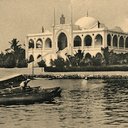
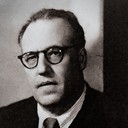
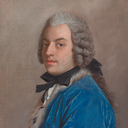
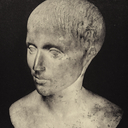
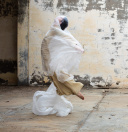
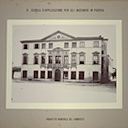
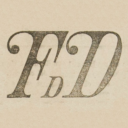
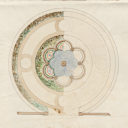
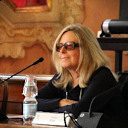
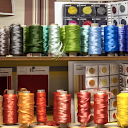
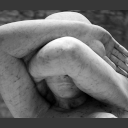
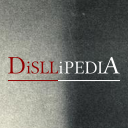
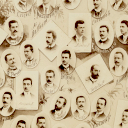
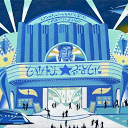
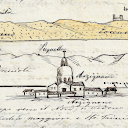
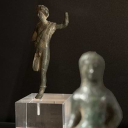
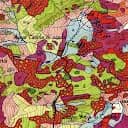
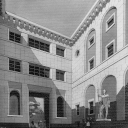
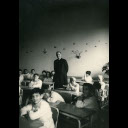
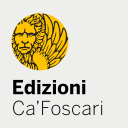
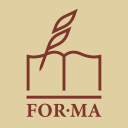
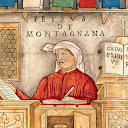
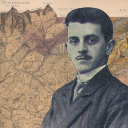
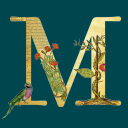
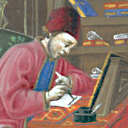
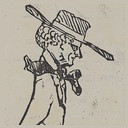
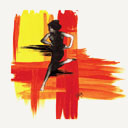


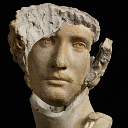
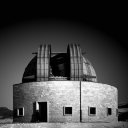
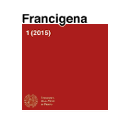
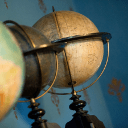
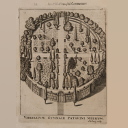
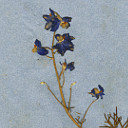
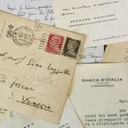
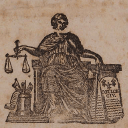

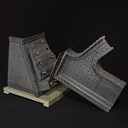
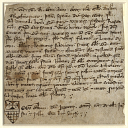
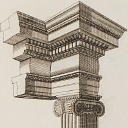
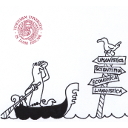
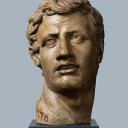

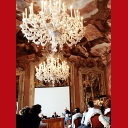
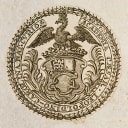
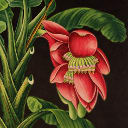
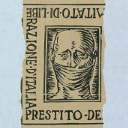
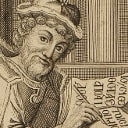
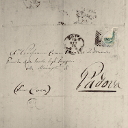

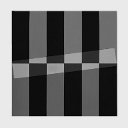
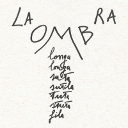

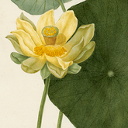
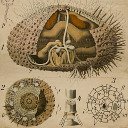
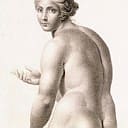
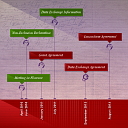

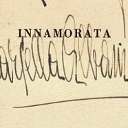
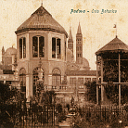
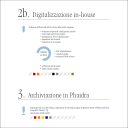



 è un servizio del
è un servizio del